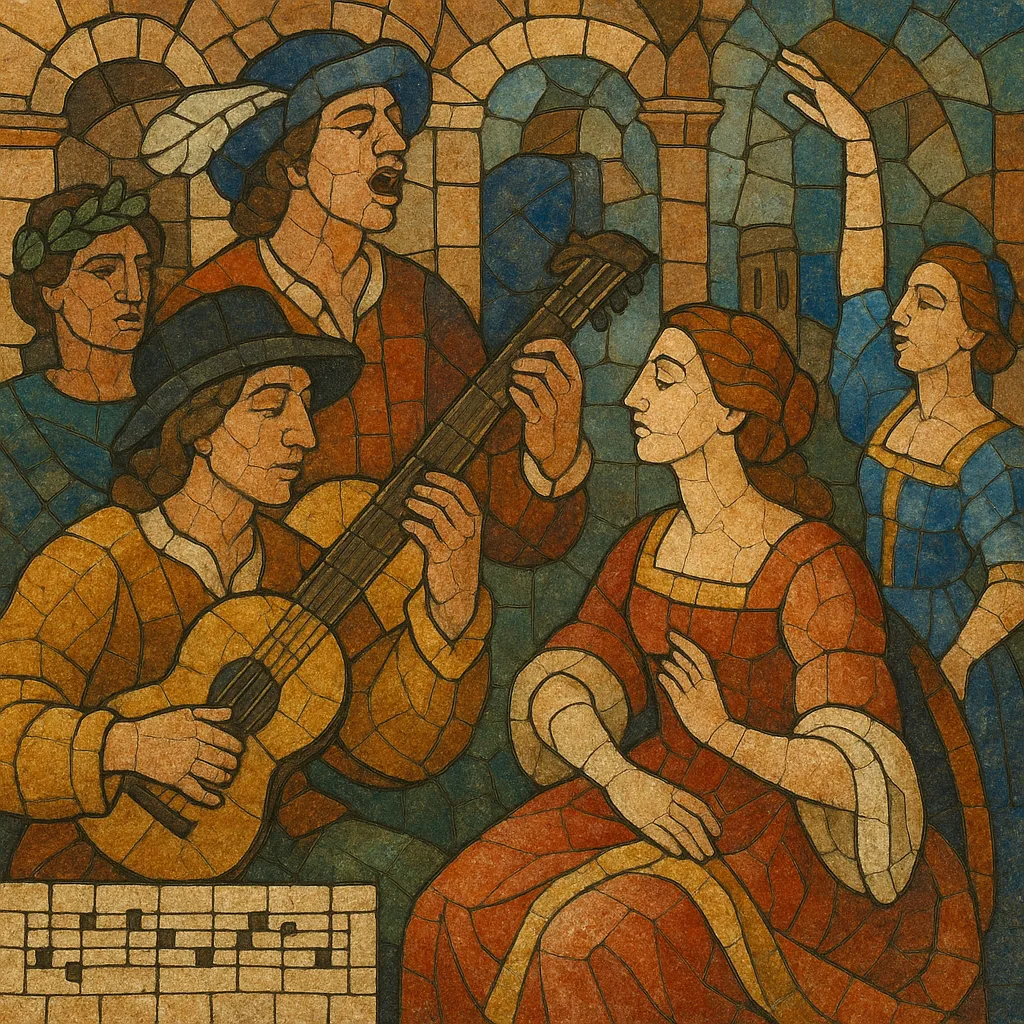Zarzuela barroca is the early, Baroque-era form of the Spanish zarzuela: a courtly and public musical theatre that blends spoken dialogue with sung numbers, choruses, dances, and instrumental interludes.
It emerged in 17th‑century Spain around the royal hunting lodge La Zarzuela (near Madrid), from which it takes its name. Unlike fully sung Italian opera, Baroque zarzuela alternates prose or verse dialogue with arias, ensembles, and popular dance-songs, rooting high court spectacle in recognizable Iberian idioms.
Stylistically it marries Italianate recitative and aria craft to Spanish song and dance forms such as jácaras, seguidillas, and later fandangos, often with vivid mythological or allegorical plots crafted by leading Golden Age playwrights.
Baroque zarzuela coalesced in Madrid in the 1650s at the royal hunting lodge La Zarzuela, where court entertainments combined drama, spectacle, and music. The composer Juan Hidalgo de Polanco and playwrights such as Pedro Calderón de la Barca shaped the template with works like El laurel de Apolo (1657), mixing spoken scenes with arias, choruses, and dances.
Unlike fully sung opera, zarzuela barroca alternates spoken dialogue with musical numbers. It draws on Baroque recitative and aria idioms while incorporating Spanish popular and courtly dances (jácaras, seguidillas, later fandangos) and chorus scenes akin to villancicos. The instrumentation centers on Baroque strings and continuo (harpsichord, guitar), with color from winds and brass, and characteristic Iberian rhythmic play (including hemiolas) that gives the music its lively, local character.
Under the early Bourbon monarchy, Italian opera grew fashionable at court, putting pressure on native forms. Composers such as Sebastián Durón, Antonio de Literes, and later José de Nebra sustained and refined the Spanish mix of dialogue and song, often collaborating with librettists like José de Cañizares and Antonio de Zamora. The repertory broadened beyond court to public theatres, where spectacle, dance, and topical themes flourished.
By the later 18th century, lighter intermezzo practices fed into the tonadilla and sainete, while the zarzuela tradition itself would eventually reconfigure in the 19th century into zarzuela grande and género chico. Baroque zarzuela’s synthesis of national dance-song with dramatic music laid enduring groundwork for Spanish musical theatre and influenced subsequent Spanish classical and stage traditions.


